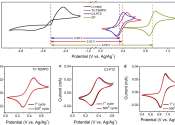Generating power where seawater and river water meet
Scientists have known since the 1950s that it is theoretically possible to generate electricity through the movement of water in locations where seawater and river water meet. This type of technology is called osmotic power ...
Jul 21, 2022
0
69









